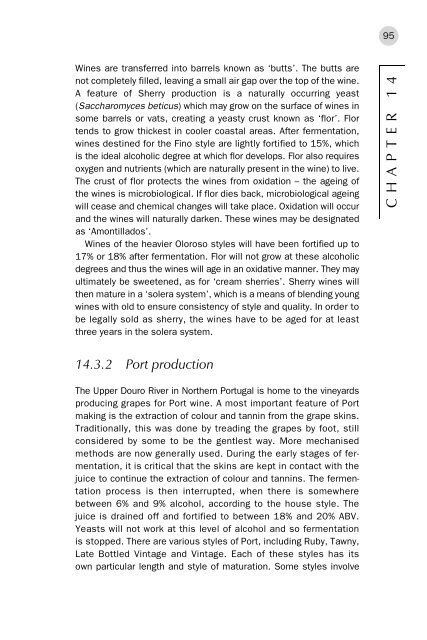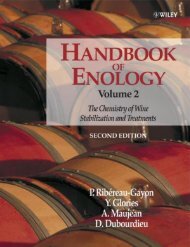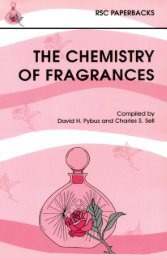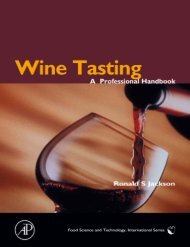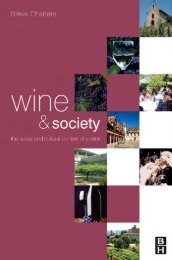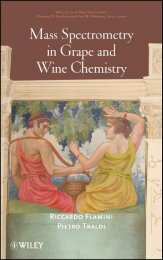Wine Production : Vine to Bottle - Vinum Vine
Wine Production : Vine to Bottle - Vinum Vine
Wine Production : Vine to Bottle - Vinum Vine
Create successful ePaper yourself
Turn your PDF publications into a flip-book with our unique Google optimized e-Paper software.
95<br />
<strong>Wine</strong>s are transferred in<strong>to</strong> barrels known as ‘butts’. The butts are<br />
not completely filled, leaving a small air gap over the <strong>to</strong>p of the wine.<br />
A feature of Sherry production is a naturally occurring yeast<br />
(Saccharomyces beticus) which may grow on the surface of wines in<br />
some barrels or vats, creating a yeasty crust known as ‘flor’. Flor<br />
tends <strong>to</strong> grow thickest in cooler coastal areas. After fermentation,<br />
wines destined for the Fino style are lightly fortified <strong>to</strong> 15%, which<br />
is the ideal alcoholic degree at which flor develops. Flor also requires<br />
oxygen and nutrients (which are naturally present in the wine) <strong>to</strong> live.<br />
The crust of flor protects the wines from oxidation – the ageing of<br />
the wines is microbiological. If flor dies back, microbiological ageing<br />
will cease and chemical changes will take place. Oxidation will occur<br />
and the wines will naturally darken. These wines may be designated<br />
as ‘Amontillados’.<br />
<strong>Wine</strong>s of the heavier Oloroso styles will have been fortified up <strong>to</strong><br />
17% or 18% after fermentation. Flor will not grow at these alcoholic<br />
degrees and thus the wines will age in an oxidative manner. They may<br />
ultimately be sweetened, as for ‘cream sherries’. Sherry wines will<br />
then mature in a ‘solera system’, which is a means of blending young<br />
wines with old <strong>to</strong> ensure consistency of style and quality. In order <strong>to</strong><br />
be legally sold as sherry, the wines have <strong>to</strong> be aged for at least<br />
three years in the solera system.<br />
CHAPTER 14<br />
14.3.2 Port production<br />
The Upper Douro River in Northern Portugal is home <strong>to</strong> the vineyards<br />
producing grapes for Port wine. A most important feature of Port<br />
making is the extraction of colour and tannin from the grape skins.<br />
Traditionally, this was done by treading the grapes by foot, still<br />
considered by some <strong>to</strong> be the gentlest way. More mechanised<br />
methods are now generally used. During the early stages of fermentation,<br />
it is critical that the skins are kept in contact with the<br />
juice <strong>to</strong> continue the extraction of colour and tannins. The fermentation<br />
process is then interrupted, when there is somewhere<br />
between 6% and 9% alcohol, according <strong>to</strong> the house style. The<br />
juice is drained off and fortified <strong>to</strong> between 18% and 20% ABV.<br />
Yeasts will not work at this level of alcohol and so fermentation<br />
is s<strong>to</strong>pped. There are various styles of Port, including Ruby, Tawny,<br />
Late <strong>Bottle</strong>d Vintage and Vintage. Each of these styles has its<br />
own particular length and style of maturation. Some styles involve


